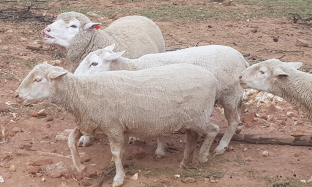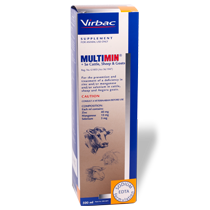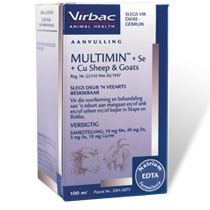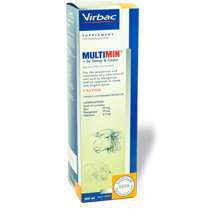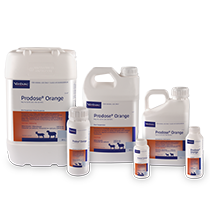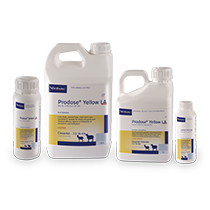
Preparation of sheep ewes for mating
The correct preparation of your ewes in the month before mating can have a positive effect on fertilisation and their lambing percentages. It automatically improves the wean percentage, which means that there are more lambs to market and a larger selection pool for replacement ewes.
Sheep are inherently seasonal breeders and are at their most fertile when the days start to get shorter in the autumn. However, most flocks are totally or partially mated out of the normal mating season, e.g. the spring mating season. With the correct preparation, the negative effect of breeding out of season can be overcome.
Nutrition
Ewes in good condition (3 to 4) will always reproduce better than too thin (<2,5) or too fat (>4) ewes. This is the starting point to ensure good fertilization. Flush feeding can also be used to get the ewes in a phase of increasing growth. Besides mating season, this has the most significant positive effect on the lambing percentage. In the three weeks before mating, the ewes should receive good nutrition to ensure that their weight constantly increases. This can be done in the form of providing good pasture or supplemental feed. However, just prevent them from becoming too fat.
Ensure that their levels of trace elements and vitamins A and E are optimal. Although sheep take in trace elements throughout the year via pasture and licks, it has been proven that a top-up supplementation with Multimin® and vitamins A and E four weeks before mating has a positive effect on fertilization.
Parasite Control
Depending on factors such as the climate, season, and type of pasture, deworming can also be of great value. It can almost be regarded as part of the flush-feeding effect due to the fact that the negative effects that internal parasites may have on the ewes (e.g. anaemia, reduced appetite, diarrhea, irritation, nasal bot, etc.) are eliminated. If a remedy that has a residual action is administered, it can be beneficial in view of the fact that one does not want to handle the ewes unnecessarily during mating season. Handling and the associated stress can lead to resorptions during mating season and lower lambing percentages.
Vaccines
Ensure that the necessary vaccines that are required before the mating season, e.g. those for enzootic abortion, pulpy kidney, bluetongue, etc. are up to date. Do not administer any live vaccines within four weeks of mating season!
General
Check the ewes’ udders before starting to prepare them and cull the ewes with udders that are sufficiently damaged to prevent them from raising a lamb properly. Rather spend time and money on ewes that can benefit optimally from the preparation. Check the ewes’ feet and ensure that the hooves have not grown out too far or are deformed. Rather rectify this now than during mating season.
Check the ewes’ mouths and cull those of which the teeth are worn, especially in extensive circumstances. If they cannot graze properly, it will have a negative effect on their condition, which may be especially detrimental at lambing time. Colostrum and milk production will be negatively affected, as well as the lambs’ ability to survive and weaning mass.
Teaser rams can be used to stimulate ewes to come into heat out of season. This reduces the duration of the lambing season, making management easier. Add teaser rams at a ratio of 2% of the number of ewes and never for longer than until nine to 11 days before the start of mating season. It is important to prevent the ewes from getting in close contact with the rams beforehand. This can cause the ewes to go into oestrous and if they are then not fertilized, they could possibly go into reproductional rest by the time mating season starts.
If at all practical, ewes can be shorn a month before mating. This also has a stimulating effect that could lead to better fertilization. Avoid shearing during mating season at all cost.
Since areas differ, it is advisable to consult your local vet, nutritional expert, and Virbac Technical Sales Advisor to ensure the use of the correct product and nutritional regime.

